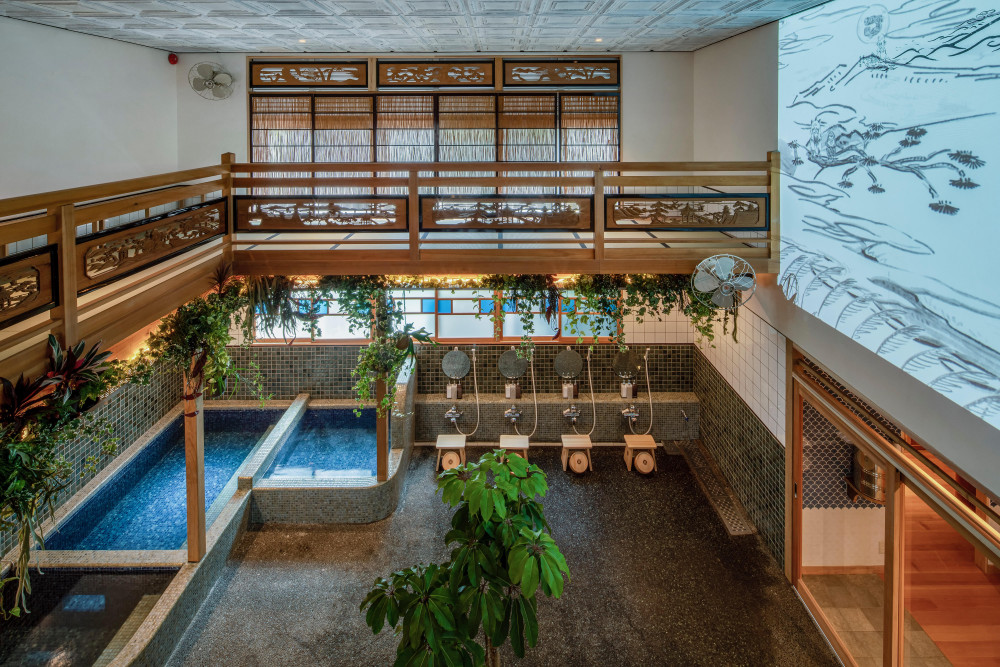September 19, 2024 A simple guide on how to use public sento By Arden Kreuzer Looking for a beginner’s guide to sento? Lots of people are eager to learn this when they visit or move to Japan. In the West, visiting a spa is typically marketed as a luxury experience. But in Japan, it’s a way of life–a tradition rooted in healing, calming and cleansing.
Because of the abundance of volcanoes dotted across the archipelago, Japanese people have been soaking in natural hot spring water for thousands of years. You might have encountered the terms “sento” and “onsen” before, but here’s the distinction–an onsen is a bathhouse with naturally heated mineral-rich water. In contrast, a sento uses regular tap water and can be found throughout cities.

Japanese sento and onsen have seen a huge comeback in recent years. Many have relaxed rules on tattoos, added saunas and cold plunges, expanded their services, and incorporated new technology like nano-bubble baths to draw in young people and international tourists to the age-old tradition. Young people in Japan are increasingly using these local neighborhood spots as a space for socializing and cleansing—and also as a solution to rising rents and small apartments.
Read more about this in our story Japan’s Surviving Sento. Visiting a Japanese bathhouse can be somewhat nerve-wracking the first time because a few etiquette rules must be followed. Keep in mind that most sento do not have private rooms available and are separated between men and women.
To make it super simple for first-timers, here’s a quick rundown on how to use Japanese bathing facilities. The cost of visiting a sento usually ranges from around ¥400 to ¥500, depending on the location and facilities. Some sento offer extra amenities like saunas for an additional fee.
Many sento also provide towels and soap for rent or purchase if you don’t bring your own. It’s good bring a small towel for washing and a larger towel for drying off. Some sento also sell or rent towels and toiletries like soap, shampoo, and conditioner if you don’t have your own.
Be sure to bring cash, as many sento do not accept credit cards. Before entering the communal bath, it’s essential to wash your body thoroughly at the shower stations. Make sure to sit down while washing and rinsing to avoid splashing others.
It’s also important not to put your towel in the bath water; keep it on the side or on your head. Many sento in Japan still have a no-tattoo policy due to traditional associations with organized crime. However, some more modern sento may allow tattoos or provide stickers to cover them.
It’s best to check in advance or inquire at the sento. In most sento, men and women bathe separately in gender-specific areas. However, some sento offer kashikiri baths (private family baths) for an additional fee, where families, couples, or groups of friends can bathe together in privacy.
Here’s a list of popular kashikiri baths. While light conversation is acceptable, sento are generally quiet spaces for relaxation. It’s polite to keep your voice low and avoid loud conversations or phone use.
Many people come to unwind, so help maintain a peaceful atmosphere. For obvious privacy reasons, phones or cameras aren’t usually okay in the bathing area. Some sento may have designated areas where you can use your phone, such as the lobby or dressing room, but always check the facility’s rules.
No, you can’t wear swimsuits in a traditional sento. It may feel uncomfortable for first-timers, but nudity is the norm in sento—no one will stare. If you prefer more privacy, some modern sento or spa-like facilities offer private bathing options.
One place like this is Ten-Yu in Hakone. Save the splashing for the waterpark. It’s polite to avoid making a splash or causing a disturbance when entering, exiting and relaxing in the water.
If you accidentally splash someone, they will be understanding if you apologize! Yes, kids can visit sento too. There are generally no strict age restrictions, but very young children or babies might need to wear swim diapers to prevent any hygiene issues. Young kids, around 6 or 7, can generally accompany their parent into either gender’s changing room.
Some sento may have policies or guidelines regarding the minimum age for entry, especially in certain facilities or private areas like saunas. If you enjoyed this beginner’s guide to sento, you might like “The Best Kissaten to Visit in Tokyo This Fall”..



















